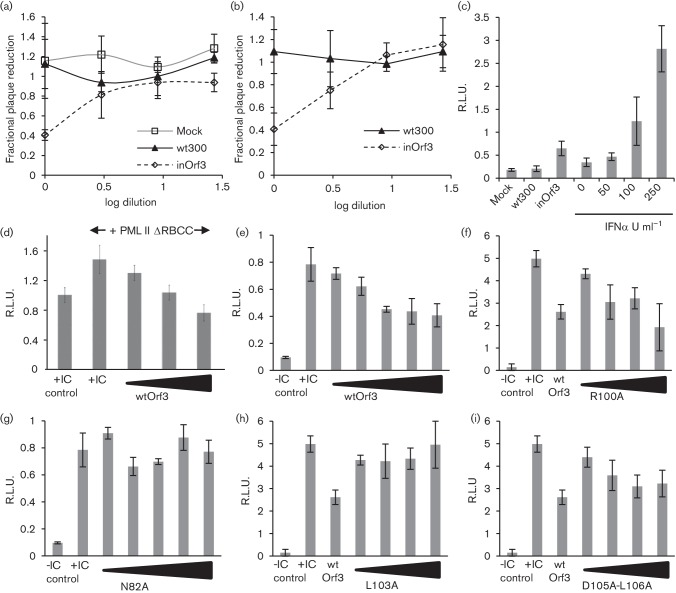Fig. 4.
Adenovirus E4 Orf3 inhibits IFN production and IFNβ promoter activation. (a) HEK293 cells were infected at a multiplicity of 10 p.f.u. cell−1 with wild-type Ad5 (wt300) or mutant inOrf3, or were mock-infected. Media was harvested at 8 h post-infection and IFN activity measured by plaque-reduction assay. (b) As panel (a) but using media from Ad5-infected MRC5 fibroblasts harvested at 16 h post-infection. (c) Media from HEK293 cell cultures infected as in (a) was harvested at 6 h post-infection and IFN activity measured using an ISRE-luciferase reporter construct in HEK293 cells. Known amounts of recombinant IFNα were analysed in parallel to provide a standard curve. (d) HEK293 cells were transfected with IFNβ promoter luciferase reporter and β-galactosidase control plasmids together with PML-IIΔRBCC (125 ng) and from 125–625 ng E4 Orf3 plasmid as appropriate and then stimulated with poly(I : C) and reporter activities assayed 8 h later. (e–i) HEK293 cells were transfected with reporter plasmids as in (d) plus 150–600 ng (150–750 ng, panels e, g) of either wild-type E4 Orf3 plasmid (e), or mutant E4 Orf3 R100A (f), N82A (g), L103A (h) or D105A-L106A (i), and then stimulated or not with poly(I : C) as indicated and assayed as in panel (d). Data are the means and standard deviation of three biological replicates.

